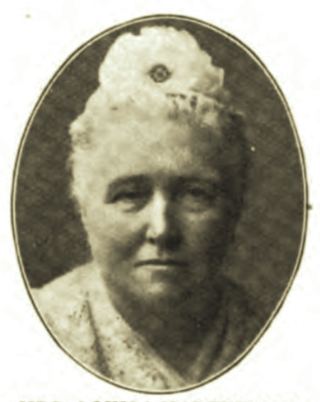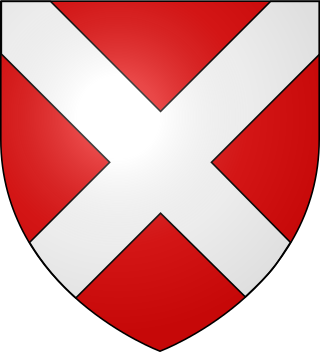Related Research Articles

The Rye House Plot of 1683 was a plan to assassinate King Charles II of England and his brother James, Duke of York. The royal party went from Westminster to Newmarket to see horse races and were expected to make the return journey on 1 April 1683, but because there was a major fire in Newmarket on 22 March, the races were cancelled, and the King and the Duke returned to London early. As a result, the planned attack never took place.
Henry Percy, 2nd Earl of Northumberland was an English nobleman and military commander in the lead up to the Wars of the Roses. He was the son of Henry "Hotspur" Percy, and the grandson of Henry Percy, 1st Earl of Northumberland. His father and grandfather were killed in different rebellions against Henry IV in 1403 and 1408, respectively, and the young Henry spent his minority in exile in Scotland. Only after the death of Henry IV in 1413 was he reconciled with the Crown, and in 1414 he was created Earl of Northumberland.
Arnulf de Montgomery was an Anglo-Norman magnate. He was a younger son of Roger de Montgomery and Mabel de Bellême. Arnulf's father was a leading magnate in Normandy and England, and played an active part in the Anglo-Norman invasion of Wales in the late eleventh century.
Thomas Digges was an English mathematician and astronomer. He was the first to expound the Copernican system in English but discarded the notion of a fixed shell of immoveable stars to postulate infinitely many stars at varying distances. He was also first to postulate the "dark night sky paradox".
Helen of Galloway was a daughter and co-heiress of Alan, Lord of Galloway and his first wife, a daughter of Roger de Lacy, Constable of Chester. Helen was the first wife of Roger de Quincy, Earl of Winchester. Although Helen was the first of Roger's three wives, his only descendants were his three daughters by Helen. The eldest daughter, Margaret, married William de Ferrers, Earl of Derby ; the second daughter, Elizabeth, married Alexander Comyn, Earl of Buchan ; the third daughter, Helen, married Alan de la Zouche.

Garter Principal King of Arms is the senior king of arms and officer of arms of the College of Arms, the heraldic authority with jurisdiction over England, Wales and Northern Ireland. The position has existed since 1415.
Magnús Óláfsson was a King of Mann and the Isles. He was a son of Óláfr Guðrøðarson, King of the Isles, and a member of the Crovan dynasty. Magnús' realm encompassed Mann and parts of the Hebrides. Some leading members of Magnús' family—such as his father—styled themselves "King of the Isles"; other members—such as Magnús and his brothers—styled themselves "King of Mann and the Isles". Although kings in their own right, leading members of the Crovan dynasty paid tribute to the Kings of Norway and generally recognised a nominal Norwegian overlordship of Mann and the Hebrides. Magnus was forced to cede lordship of the Isle of Mann to King Alexander III and swear fealty to him in 1264 after the Battle of Largs between the Norwegians and Scots after which the Norwegians retreated to Orkney.
John Butler, 6th Earl of Ormond was considered one of the first gentlemen of the age in which he lived. He was an ambassador to the most important courts of Europe.

Marion Margaret Violet Manners, Duchess of Rutland was a British artist and noblewoman. A granddaughter of the 24th Earl of Crawford, she married Henry Manners in 1882. She was styled the Marchioness of Granby from 1888 to 1906, when Manners succeeded as Duke of Rutland. She had five children, including John Manners, the 9th Duke of Rutland and the socialite Lady Diana Cooper.

Frances Elizabeth Jocelyn, Viscountess Jocelyn, VA was a British courtier and amateur photographer. She was born as the youngest daughter of Peter Cowper, 5th Earl Cowper and his wife Emily Lamb. However, some have speculated that she and her brother William were fathered by Henry John Temple, 3rd Viscount Palmerston, whom Lady Cowper married in 1839, after Cowper's death. Before her marriage, Lady Frances served as one of the trainbearers at the coronation of Queen Victoria, and she also served as a bridesmaid at the wedding of the queen to Prince Albert in 1840.

Jane Loftus, Marchioness of Ely was an English lady of the bedchamber and a close friend of Queen Victoria. Her parents were James Hope-Vere and Lady Elizabeth Hay, and through her mother she was a cousin of Arthur Wellesley, the first Duke of Wellington. After her marriage to John Loftus, the third Marquess of Ely, she developed friendships with Queen Sophie of the Netherlands and the Empress Eugénie. Jane arrived at court as a Lady of the Bedchamber in 1851, and despite her own nervousness and lack of discretion, she became a close companion of Queen Victoria until her resignation in 1889. Her service was marred by her constant illnesses and fear of the Queen, but she proved a loyal and devoted servant, deferring to her royal mistress in all matters. Jane died on 11 June 1890 and is buried at Kensal Green cemetery in London.

Louisa Martindale, née Spicer was a British activist for women's rights and suffragist.

Sir Walter Cope of Cope Castle in the parish of Kensington, Middlesex, England, was Master of the Court of Wards, Chamberlain of the Exchequer, public Registrar-General of Commerce and a Member of Parliament for Westminster.
The Surtees Society is a text publication society and registered charity based in Durham in northern England. The society was established on 27 May 1834 by James Raine, following the death of the renowned County Durham antiquarian Robert Surtees. Raine and other former friends of Surtees created the society to honour his memory and carry on his legacy, with the focus on publishing documents relating to the region between the Humber estuary and Firth of Forth in the east and the River Mersey and the River Clyde in the west, the region that had once constituted the kingdom of Northumbria. Membership of the Society is by annual subscription. Members receive the book published for the year of subscription.

Affreca de Courcy or Affrica Guðrøðardóttir was a late 12th-/early 13th century noblewoman. She was the daughter of Godred Olafsson, King of the Isles, a member of the Crovan dynasty. In the late 12th century she married John de Courcy. Affrica is noted for religious patronage in northern Ireland.

Margaret Elizabeth Cousins was an Irish-Indian educationist, suffragist and Theosophist, who established All India Women's Conference (AIWC) in 1927. She was the wife of poet and literary critic James Cousins, with whom she moved to India in 1915. She is credited with preserving the tune of the Indian National Anthem Jana Gana Mana based on the notes provided by Tagore himself in February 1919, during Rabindranath Tagore's visit to the Madanapalle College. She was a member of the Flag Presentation Committee which presented the National Flag to the Constituent Assembly on 14 August 1947.

The Neville–Neville feud was an inheritance dispute in the north of England during the early fifteenth century between two branches of the noble Neville family. The inheritance in question was that of Ralph Neville, 1st Earl of Westmorland, a prominent northern nobleman who had issue from two marriages. Westmorland favoured as his heirs the children of his second wife, Joan Beaufort, closely related to the royal family, over those of his first wife, Margaret Stafford.
Domnall mac Áeda, also known as Domnall Dabaill, was a King of Ailech. He was a son of Áed Findliath mac Niall, High King of Ireland. Domnall was a half-brother of Niall Glúndub mac Áeda, a man with whom he shared the kingship of Ailech. From Domnall would descend the Mac Lochlainn dynasty.

The Battle of Pitgaveny, also called the Battle of Bothnagowan, was fought between the forces of Duncan I of Scotland and Macbeth, at the time the ruler of Moray, on 14 August 1040. The battle was part of a campaign by Duncan into Moray against Macbeth. It was fought at Bothganown, modern day Pitgaveny, near Elgin. The battle was a victory for Macbeth and resulted in Duncan's death.
References
- ↑ "Thesis: Aristocratic women and political society in early- and mid-Victorian Britain". Bodleian Libraries. Retrieved 16 March 2020.
- ↑ Campbell Orr 1996.
- ↑ "Search Results – Contributor: K. D. Reynolds". Oxford Dictionary of National Biography . Retrieved 15 March 2020.
- ↑ Reynolds 2004a.
- ↑ Reynolds 2004b.
- ↑ Bentley 2000, p. 228.
- ↑ Reynolds 1998, p. 1.
- ↑ Levine 2000, pp. 786–87.
- Works cited
- Bentley, Michael (February 2000). "Review: Aristocratic Women and Political Society in Victorian Britain by K. D. Reynolds". The English Historical Review . 115 (460): 228–29. doi:10.1093/ehr/115.460.228-a. JSTOR 579513.(subscription required)
- Campbell Orr, Clarissa, ed. (1996). Wollstonecraft's Daughters: Womanhood in England and France, 1780-1920. Manchester University Press. ISBN 0-7190-42410.
- Levine, Philippa (September 2000). "Review: Aristocratic Women and Political Society in Victorian Britain by K. D. Reynolds". The Journal of Modern History . 72 (3): 785–87. doi:10.1086/316056. JSTOR 10.1086/316056.(subscription required)
- Reynolds, K. D. (1998). Aristocratic Women and Political Society in Victorian Britain. Clarendon Press. ISBN 0-19-820727-1.
- Reynolds, K.D. (2004a). "Victoria (1819–1901)". Oxford Dictionary of National Biography (online ed.). Oxford University Press. doi:10.1093/ref:odnb/36652.(Subscription or UK public library membership required.)
- Reynolds, K.D. (2004b). "Diana [née Lady Diana Frances Spencer], princess of Wales". Oxford Dictionary of National Biography (online ed.). Oxford University Press. doi:10.1093/ref:odnb/68348.(Subscription or UK public library membership required.)